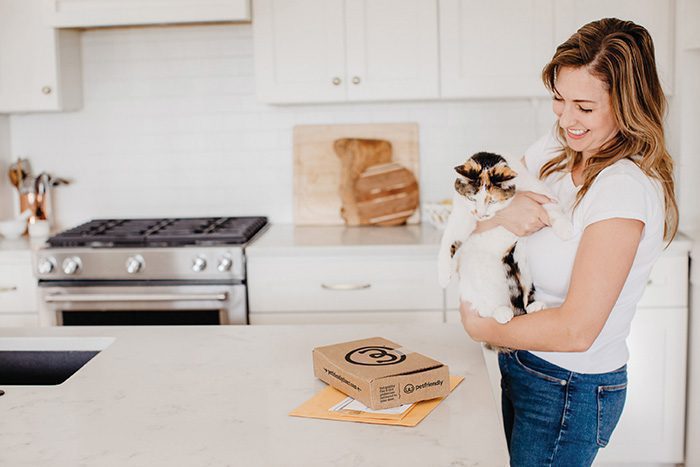Arthritis, or osteoarthritis, is a progressive condition affecting approximately 20% of cats in the UK, according to Calder Vets.
This degenerative disease primarily targets weight-bearing joints such as the hips, elbows, and knees, with older felines being disproportionately impacted due to age-related cartilage wear.
Key facts about feline arthritis:
- Often underdiagnosed due to subtle symptoms like reduced activity or grooming changes.
- It can lead to chronic pain and severe mobility limitations if left untreated.
- Affects both indoor and outdoor cats, though sedentary lifestyles may exacerbate symptoms.
The Critical Role of Early Intervention in Feline Joint Health
Proactive management of joint health in senior cats is not just reactive care—it’s a vital strategy to preserve their independence and vitality.
Early detection allows for interventions that slow disease progression and mitigate discomfort, directly enhancing quality of life.
Veterinarians emphasize that addressing symptoms promptly can prevent secondary complications, such as muscle atrophy or behavioral changes caused by persistent pain.
Why timely action matters:
- Pain relief: Targeted treatments, including anti-inflammatory medications, restore mobility.
- Environmental adjustments: Ramps, non-slip flooring, and elevated feeding stations reduce physical strain.
- Nutritional support: Supplements like glucosamine and omega-3 fatty acids promote cartilage repair.
Key Strategies for Enhancing Comfort and Mobility
A holistic approach to supporting senior cats combines veterinary care, lifestyle adaptations, and compassionate monitoring.
By integrating these strategies, pet owners can create a supportive environment that aligns with their cat’s evolving needs:
| Approach | Benefits | Example Applications |
|---|---|---|
| Veterinary Collaboration | Personalized pain management plans | Prescription medications, laser therapy |
| Home Modifications | Reduced physical stress | Ramps for furniture access, litter boxes with low entry |
| Weight Management | Less joint pressure | Calorie-controlled diets, gentle exercise routines |
By prioritizing science-backed practices and empathetic care, you can empower your senior cat to thrive despite arthritis challenges.

What Is Feline Arthritis?
Feline arthritis refers to the inflammation of joints, leading to stiffness, pain, and reduced mobility. The most common form in cats is osteoarthritis (OA), a degenerative condition where cartilage deteriorates over time, exposing underlying bone and triggering chronic discomfort.
Less frequently, cats may develop inflammatory arthritis caused by infections or autoimmune disorders, though OA accounts for the majority of cases.
Types of Arthritis in Cats
| Type | Description | Prevalence |
|---|---|---|
| Osteoarthritis | Degenerative joint disease due to cartilage breakdown | Up to 90% of senior cats show radiographic evidence of OA |
| Inflammatory Arthritis | Immune-mediated or infection-induced joint inflammation | Rare, but requires targeted treatment |
Why Senior Cats Are Vulnerable to Joint Degeneration
As cats age, natural wear and tear on their joints accelerates cartilage degradation.
Studies reveal that 82% of cats over 14 years old exhibit radiographic signs of osteoarthritis, with weight-bearing joints like hips and elbows being most affected. This vulnerability stems from:
- Reduced Cartilage Regeneration: Aging felines lose the ability to repair cartilage effectively, leaving joints prone to irreversible damage.
- Sedentary Lifestyles: Many older cats become less active, weakening muscles that support joints and exacerbating stiffness.
- Weight Gain: Excess body mass increases mechanical stress on joints, worsening degeneration.
Cats often mask symptoms until pain becomes severe, making early detection challenging.
However, subtle changes—such as reluctance to jump or altered grooming habits—can signal underlying joint issues [[9]].
Common Risk Factors and Symptoms
Risk Factors for Senior Cat Joint Issues
- Age: Over 12 years old
- Obesity: Excess weight increases joint strain
- History of Injury: Past trauma can predispose cats to OA
Recognizing Symptoms of Arthritis in Cats
- Limping or stiffness after rest
- Decreased activity levels or hesitation to climb
- Muscle atrophy and prominent bones due to reduced movement
Early veterinary consultation is critical to slow progression and improve quality of life.
Recognizing Subtle Behavioral Changes
Arthritis in cats often manifests through behavioral shifts rather than overt physical symptoms. Senior felines may exhibit:
- Reduced activity levels: A decline in playfulness or reluctance to climb stairs.
- Difficulty jumping: Avoiding furniture or missing jumps they previously executed with ease.
- Grooming changes: Matted fur or unkempt appearance due to pain limiting flexibility.
- Litter box avoidance: Struggling to enter boxes with high sides or inadequate placement.
These signs are frequently mistaken for normal aging, but they signal progressive joint discomfort requiring intervention.
Understanding “Absence Symptoms” in Arthritic Cats
Unlike dogs, cats rarely limp when experiencing joint pain. Instead, they display “absence symptoms”, such as:
| Symptom | Description |
|---|---|
| Avoidance of vertical spaces | Ceasing to jump onto counters or window perches. |
| Reduced social interaction | Withdrawing from human contact due to stiffness. |
| Altered sleep patterns | Increased rest periods to conserve energy and minimize pain. |
This stealthy progression underscores the importance of proactive observation, as untreated osteoarthritis can lead to chronic inflammation and irreversible joint damage.

When to Consult a Veterinarian for Joint Concerns
Early veterinary intervention is critical for slowing disease progression. Schedule an appointment if your cat:
- Shows persistent reluctance to move: Refusing to engage in daily activities.
- Exhibits muscle atrophy: Visible loss of muscle mass around affected joints.
- Displays behavioral shifts: Aggression, excessive vocalization, or litter box accidents.
Veterinarians may recommend radiographs, blood tests, or gait analysis to confirm diagnosis and tailor treatment plans.
Annual wellness exams are insufficient for detecting early-stage arthritis; biannual checkups are advised for cats over 12 years old.
By prioritizing vigilance and timely care, pet owners can significantly improve outcomes for aging felines facing joint challenges.
The Diagnostic Process for Feline Joint Conditions
Accurate diagnosis of joint-related discomfort in aging felines requires a combination of clinical assessments and advanced imaging. Veterinarians typically employ:
Physical Examination
- Palpation of joints to detect swelling, warmth, or pain response.
- Assessment of range of motion and gait abnormalities.
Imaging Techniques
| Method | Purpose | Key Findings |
|---|---|---|
| Radiographs (X-rays) | Identify bone spurs, joint space narrowing, or cartilage loss | Common in osteoarthritis cases |
| Advanced Imaging (CT/MRI) | Evaluate soft tissue involvement (e.g., ligament damage) | Reserved for complex cases or atypical presentations |
Laboratory Tests
- Blood work to rule out systemic conditions like hyperthyroidism or diabetes.
- Joint fluid analysis to differentiate osteoarthritis from infectious or immune-mediated arthritis.
Why Early Detection Matters
Progressive joint degeneration in senior felines often begins asymptomatically, making early intervention critical.
Studies show that 82% of cats over 12 years old exhibit radiographic signs of osteoarthritis, yet many owners remain unaware until mobility is severely impacted. Early diagnosis enables:
- Targeted Pain Management: Initiating anti-inflammatory therapies before irreversible damage occurs.
- Slowed Disease Progression: Weight management and chondroprotective supplements (e.g., glucosamine) can preserve joint function.
- Improved Quality of Life: Adjustments like heated resting areas or low-impact exercise reduce discomfort.
Delaying veterinary consultation risks chronic pain and secondary complications such as muscle atrophy or behavioral changes.
What to Expect During a Veterinary Evaluation
To ensure a comprehensive assessment, pet owners should:
- Document Behavioral Changes: Note reduced activity, altered grooming habits, or reluctance to jump.
- Provide Medical History: Include past injuries, weight fluctuations, or existing health conditions.
During the visit, the veterinarian may:
- Perform a full musculoskeletal exam.
- Recommend diagnostic imaging based on clinical suspicion.
- Suggest a trial period of pain management to observe the response.
Annual wellness exams are insufficient for detecting early-stage joint issues; biannual evaluations are advised for cats over 10 years old.
Proactive diagnostics empower tailored interventions, ensuring senior felines maintain mobility and comfort.
Pharmaceutical Interventions for Joint Pain
Veterinary-approved non-steroidal anti-inflammatory drugs (NSAIDs) remain a cornerstone of pain management in felines with osteoarthritis.
Medications like meloxicam inhibit cyclooxygenase enzymes, reducing inflammation and discomfort while preserving joint function.
However, long-term use requires strict monitoring due to potential renal and hepatic side effects, particularly in aging felines.
Other pharmacological options include:
- Buprenorphine: A partial opioid agonist for mild-to-moderate pain.
- Gabapentin: Addresses neuropathic pain components in advanced cases.
Always consult a veterinarian to tailor dosages and avoid adverse reactions.
Nutritional Supplements for Cartilage Health
Chondroprotective agents like glucosamine and chondroitin sulfate support cartilage repair by stimulating glycosaminoglycan synthesis and inhibiting degradative enzymes.
Combined with omega-3 fatty acids (EPA/DHA), which reduce pro-inflammatory cytokines, these supplements offer a foundational approach to managing joint degeneration.
| Supplement | Mechanism | Efficacy Evidence |
|---|---|---|
| Glucosamine/Chondroitin | Enhances cartilage matrix integrity | Slows OA progression in clinical trials |
| Omega-3 Fatty Acids | Inhibits COX and LOX pathways | Reduces lameness scores in 60% of treated cats |
Results may take 4–6 weeks to manifest, requiring consistent administration.
Evidence-Based Alternative Therapies
Acupuncture
Studies show acupuncture alleviates pain by modulating nerve signaling and releasing endogenous opioids.
A 2023 study reported a 40% improvement in mobility scores among cats receiving biweekly sessions.
Laser Therapy
Low-level laser therapy (LLLT) reduces synovial inflammation and promotes tissue regeneration. Clinical trials demonstrate improved weight-bearing capacity after 8 weeks of treatment.
Hydrotherapy
Controlled water treadmill exercises enhance muscle mass and joint flexibility without high-impact stress. Limited availability restricts access, though referral clinics increasingly offer this modality.

Surgical Options for Severe Joint Degeneration
Surgical intervention is reserved for structural abnormalities or end-stage disease. Common procedures include:
Femoral Head Ostectomy (FHO)
This involves removing the femoral head to eliminate bone-on-bone contact, particularly effective for hip dysplasia or fractures. Postoperative rehabilitation includes restricted activity for 6 weeks, followed by physical therapy.
Other Considerations
- Joint Fusion (Arthrodesis): Stabilizes severely damaged joints like the carpus, though mobility is permanently reduced.
- Total Joint Replacement: Rarely performed in cats due to size constraints and cost.
Surgery achieves pain relief in 85% of cases, though candidacy depends on overall health and disease severity.
Integrating Treatment Strategies
A multimodal approach—combining pharmaceuticals, nutrition, and physical therapies—yields the best outcomes for senior cats facing joint challenges.
Collaborate with a veterinary team to create a personalized plan, ensuring early intervention maximizes mobility and comfort.
Pharmacological and Non-Pharmacological Interventions
Effective pain management for aging felines combines medication-based therapies with non-drug strategies to address both inflammation and discomfort. Veterinarians often recommend:
- Non-steroidal anti-inflammatory drugs (NSAIDs): Target cyclooxygenase pathways to reduce prostaglandin production, alleviating inflammation and pain.
- Chondroprotective agents: Glucosamine and omega-3 fatty acids support cartilage repair while modulating inflammatory responses.
- Weight management: Excess body mass exacerbates joint stress; calorie-controlled diets improve mobility scores by up to 40%.
For cats with mild-to-moderate symptoms, non-pharmacological methods like controlled exercise and environmental enrichment can delay the need for stronger interventions.
Heat and Cold Therapy Applications
Thermal therapies are underutilized yet effective tools for managing joint discomfort:
Heat Therapy
- Purpose: Increases blood flow, relaxes muscles, and reduces stiffness.
- Methods:
- Place a warm (not hot) heating pad under the cat’s resting area for 15–20 minutes twice daily.
- Use microwaveable wheat bags wrapped in towels to avoid direct skin contact.
Cold Therapy
- Purpose: Reduces acute inflammation and numbs localized pain.
- Methods:
- Apply a cold compress (wrapped in a thin cloth) to swollen joints for 5–10 minutes post-activity.
- Freeze small water bottles to create portable ice packs for travel or outdoor exposure.
Always monitor for adverse reactions, such as shivering or agitation, and discontinue if discomfort occurs.
Medication Administration Techniques
Cats are notoriously sensitive to handling, making medication delivery challenging. Strategies to simplify the process include:
Pill Hiding:
- Embed tablets in small amounts of wet food, tuna, or cream cheese (ensure the cat consumes the entire dose).
- Use commercial pill pockets designed to mask bitter tastes.
Liquid Formulations:
- Administer syrups via a dosing syringe, placing the tip at the back of the tongue to avoid gagging.
- Mix with a small volume of strongly scented food to encourage voluntary ingestion.
Transdermal Options:
- Apply compounded gels to the inner ear flap, rotating sites to prevent irritation.
Important: Always follow veterinary instructions to avoid overdosing or interactions with other medications.
Monitoring and Adjusting Pain Management
Success depends on ongoing evaluation of the cat’s behavior and physical condition. Key indicators of improvement include:
- Increased willingness to jump or climb.
- Reduced stiffness after rest.
- Return to normal grooming habits.
Conversely, persistent lethargy, vocalization during movement, or avoidance behaviors signal the need for treatment adjustments.
Schedule follow-up exams every 3–6 months to reassess efficacy and modify protocols as needed.
By integrating targeted therapies, compassionate care, and vigilant monitoring, pet owners can significantly enhance comfort and mobility in aging felines facing joint challenges.
Gentle Exercise for Joint Flexibility
Maintaining joint flexibility in aging felines requires low-impact activities that promote circulation without exacerbating discomfort. Veterinarians recommend:
- Controlled leash walking: Short, supervised sessions (5–10 minutes) on a harness to encourage steady movement.
- Targeted play: Use feather wands or laser pointers to stimulate gentle stretching and stalking motions.
- Stair climbing: Guide cats up low, wide steps to strengthen hindlimb muscles without abrupt jumps.
Avoid high-intensity exercise, as overexertion may worsen inflammation. Consistency is key—daily sessions yield better outcomes than sporadic activity.
Physical Therapy Techniques for Aging Felines
Physical therapy slows degenerative joint changes by preserving muscle mass and range of motion. Techniques endorsed by veterinary experts include:
Passive Range-of-Motion (PROM) Exercises
- Gently flex and extend each joint through its natural arc, holding for 5 seconds per repetition.
- Perform 10–15 repetitions per limb, twice daily, to reduce stiffness.
Massage Therapy
- Apply light pressure along the spine and limbs to alleviate tension and improve blood flow.
- Focus on areas near affected joints, avoiding direct manipulation of inflamed regions.
Therapeutic Ultrasound
- Utilizes sound waves to reduce inflammation and enhance tissue repair. Available at specialized clinics.
Always consult a veterinary professional before initiating therapy to ensure techniques align with the cat’s condition.
Mobility Aids: Ramps, Stairs, and Adaptive Furniture
Environmental modifications are critical for minimizing strain on compromised joints. Recommended aids include:
| Aid | Purpose | Implementation Tips |
|---|---|---|
| Ramps | Choose non-slip surfaces and gradual inclines. | Provide step-by-step access to elevated areas like beds or windowsills. |
| Pet stairs | Opt for wide treads and secure anchoring. | Support pressure points with memory foam or gel inserts. |
| Orthopedic beds | Support pressure points with memory foam or gel inserts. | Place in warm, draft-free locations near food and litter boxes . |
Additional adjustments:
- Install carpet runners on slippery floors to prevent falls.
- Use raised feeding stations to reduce neck strain during meals.
Monitoring Progress and Adjusting Strategies
Evaluate the effectiveness of mobility interventions through:
- Activity tracking: Note improvements in stair climbing, grooming, or play engagement.
- Weight management: Maintain optimal body condition to decrease joint stress.
- Veterinary assessments: Schedule biannual exams to adjust exercise intensity or aid placement.
If stiffness persists or worsens, revisit pain management protocols with a veterinarian.
A multimodal approach—combining exercise, therapy, and adaptive tools—maximizes independence and comfort for senior cats facing joint challenges.
Optimizing Litter Box Accessibility
Arthritic cats often struggle with standard litter boxes due to limited mobility.
A low-entry design, such as the Kitty Go Here Senior Cat Litter Box, allows easier access by minimizing the need to lift limbs. Key adjustments include:
- Placement: Position boxes near resting areas and food to reduce travel distance.
- Size: Choose boxes at least 1.5 times the cat’s length for comfortable movement.
- Material: Use soft, low-dust litter to avoid paw irritation.
Avoid covered boxes, as they may restrict airflow and require additional effort to enter.
Reducing Slip Hazards with Safe Surfaces
Slippery floors exacerbate joint strain and increase fall risks. To enhance traction:
- Install non-slip rugs: Place textured mats on hardwood or tile floors, focusing on high-traffic zones like near food bowls or windowsills.
- Use carpet runners: Secure these on stairs to provide stable footing for climbing.
- Trim claws regularly: Overgrown nails reduce grip and worsen instability.
Cats with advanced osteoarthritis benefit from consistent, obstacle-free pathways to minimize abrupt movements.
Adapting Feeding and Resting Areas
Feeding Stations
Elevate food and water bowls to shoulder height to reduce neck strain during meals. Raised feeders promote a neutral spine position, easing discomfort from bending.
Resting Spaces
- Orthopedic beds: Memory foam or gel-infused options support pressure points and improve circulation.
- Warmth: Place beds near heat sources (e.g., radiators or heated pads) to soothe stiff joints.
Avoid locations requiring jumps or steep climbs to reach resting spots.
Navigating Multi-Level Homes
For cats in multi-story homes:
| Solution | Purpose | Implementation Tips |
|---|---|---|
| Ramps | Use non-slip materials and secure angles to prevent sliding. | Choose wide treads and stable anchoring points. |
| Pet stairs | Opt for pressure-mounted gates to avoid wall damage. | Enable step-by-step access to furniture or beds. |
| Stair gates | Restrict unsupervised access to prevent falls . | Restrict unsupervised access to prevent falls. |
For cats avoiding upper levels, create a ground-floor sanctuary with all essentials (litter, food, bedding) to reduce the need for climbing.
Creating a Supportive Environment
Environmental adaptations should evolve with the cat’s condition. Regularly reassess the layout safety and consult a veterinarian to align modifications with disease progression.
By prioritizing accessibility and comfort, pet owners can significantly enhance mobility and reduce pain-related stressors in aging felines.

Omega-3 Fatty Acids and Anti-Inflammatory Nutrients
Dietary interventions play a pivotal role in mitigating joint degeneration by targeting inflammation and supporting cartilage integrity.
Omega-3 fatty acids, particularly eicosapentaenoic acid (EPA) and docosahexaenoic acid (DHA), inhibit pro-inflammatory cytokines and reduce synovial swelling. These nutrients are most effectively delivered through:
- Fish-based diets: Cold-water fish like salmon, mackerel, or sardines provide bioavailable omega-3 sources.
- Fortified kibble: Commercial diets enriched with microalgae or flaxseed oil offer sustainable alternatives.
Other joint-supportive nutrients include:
- Glucosamine: Stimulates glycosaminoglycan synthesis, reinforcing cartilage matrix.
- Vitamin E: Acts as an antioxidant, limiting oxidative damage in synovial fluid.
| Nutrient | Mechanism | Dietary Sources |
|---|---|---|
| Omega-3s | Inhibit COX enzymes, reduce PGE₂ production | Fish oil, algae supplements |
| Glucosamine | Enhance cartilage repair | Shellfish, chondroprotective diets |
Weight Management: Reducing Mechanical Stress
Excess body mass exacerbates joint strain, accelerating cartilage erosion in weight-bearing areas like the hips and knees.
Studies indicate that 60% of arthritic cats show improved mobility scores after achieving optimal weight, defined as a body condition score (BCS) of 4–5/9. Key strategies include:
- Calorie-controlled feeding: Measure portions using a gram scale to avoid overfeeding.
- High-protein diets: Preserve lean muscle mass while promoting fat loss, preventing sarcopenia.
- Meal frequency adjustments: Split daily intake into 3–4 small meals to maintain metabolic activity.
Avoid rapid weight loss, as abrupt caloric restriction can worsen hepatic lipidosis risk in felines.
Prescription Diets and Supplemental Support
Veterinary-formulated diets, such as Purina’s Joint Health Formula or Hill’s j/d, are designed to optimize nutrient ratios for joint function. These diets often combine:
- Low-fat profiles: Minimize adipose-derived inflammation.
- Enhanced omega-3 content: Achieve therapeutic anti-inflammatory doses.
Supplements like chondroitin sulfate and methylsulfonylmethane (MSM) offer additional support, though efficacy varies between individuals.
Always consult a veterinarian before introducing supplements to avoid interactions with medications like NSAIDs.
Monitoring and Adjusting Nutritional Strategies
Regular body weight assessments and BCS evaluations are critical for sustaining progress. Track changes in:
- Activity levels: Increased willingness to climb or play indicates reduced discomfort.
- Muscle condition: Palpate lumbar and hindlimb regions for atrophy, adjusting protein intake as needed.
Schedule biannual veterinary exams to reassess dietary plans and incorporate new therapeutic options.
A tailored nutritional approach not only alleviates symptoms but also slows disease progression, enhancing long-term quality of life for aging felines.
Emerging Regenerative Therapies in Joint Care
Recent advancements in veterinary medicine have introduced regenerative therapies as potential interventions for joint degeneration in aging felines.
While traditional approaches focus on symptom management, these emerging treatments aim to repair or slow cartilage deterioration.
Stem Cell Therapy
Stem cell therapy involves harvesting and injecting cells (often from adipose tissue) into affected joints to promote tissue regeneration.
Preliminary studies suggest it may reduce inflammation and improve mobility, though clinical trials in cats remain limited.
Veterinarians caution that outcomes vary, and long-term efficacy data are still under investigation.
Platelet-Rich Plasma (PRP)
PRP therapy uses concentrated platelets from the cat’s blood to stimulate healing.
Small-scale trials report reduced synovial inflammation in treated joints, though accessibility and cost currently restrict widespread use.
| Therapy | Mechanism | Current Evidence |
|---|---|---|
| Stem Cells | Differentiate into chondrocytes, reducing joint degradation | Limited to case studies; larger trials needed |
| PRP | Releases growth factors to enhance tissue repair | Promising but requires further validation |
Balancing Innovation with Proven Management Strategies
While emerging therapies hold promise, they should complement—not replace—established interventions. A multimodal approach remains critical:
- Weight management: Excess body mass exacerbates mechanical stress on joints, accelerating degeneration.
- Nutritional support: Diets rich in omega-3 fatty acids and glucosamine maintain cartilage health.
- Environmental adaptations: Ramps, heated beds, and non-slip surfaces reduce pain-related stressors.
Pet owners should consult board-certified veterinary surgeons or internists before pursuing experimental treatments.
By integrating evidence-based practices with cautious adoption of innovation, caregivers can optimize outcomes for aging felines facing joint challenges.
Conclusion
Managing joint degeneration in aging cats requires early detection, accurate diagnosis, and a combination of medical and lifestyle interventions.
Key strategies include recognizing subtle behavior changes, using radiographs for precise diagnosis, and applying multimodal therapies (e.g., NSAIDs, supplements, laser therapy).
Environmental adaptations and nutritional support further ease mobility. Compassionate, ongoing care—like regular vet visits and activity monitoring—is essential.
While emerging treatments offer hope, they should support, not replace, proven methods.
Ultimately, a proactive, empathetic approach enhances quality of life and deepens the human–pet bond.



